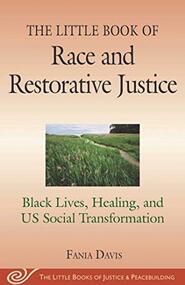|
The Justice Committee is going to start posting an article or a video more often (hopefully every week). So, we hope you will learn from them and grow in your mission to become more anti-racist.
This week, I am posting a video put out by FreedomRoad.us. It is about 1 hour 20 minutes. So, it is a bit long. However, it is a conversation between four leaders, teachers, and authors in the racial justice and reconciliation movement. These leaders include Dr. Brenda Salter McNeil who wrote Roadmap to Reconciliation 2.0 and her brand new book Becoming Brave, LaTasha Morrison who wrote Be The Bridge, Jemar Tisby who wrote The Color of Compromise, and Lisa Sharon Harper who wrote The Very Good Gospel. Their conversation includes topics such as their own stories of racial injustices, the work they do and the struggles they face, reparations vs. reconciliation, Black Lives Matter, the next generation, and church and politics. Like I said, it is a bit long, but it is power-packed. We can all learn from leaders such as these. Their hearts are towards helping to get the message out and advocate for systemic changes. Jane Bateman and The Justice Committee
0 Comments
The Racial Justice Committee would like to invite you to the August conversation about race. We invite you to read the latest article on our blog site from the book The Little Book of Race and Restorative Justice by Fania Davis. Chapter 3 is posted on the blog along with questions to consider. We'll use those questions as the basis of our conversation. We hope you can join us on Monday, August 10 at 7:00 pm for the hour-long conversation.
To join please use the link below.  Ubuntu (Zulu pronunciation: [ùɓúntʼù])[1] is a Nguni Bantu term meaning "humanity." It is often translated as "I am because we are," or "humanity towards others," or in Xhosa, "umntu ngumntu ngabantu" but is often used in a more philosophical sense to mean "the belief in a universal bond of sharing that connects all humanity (https://en.wikipedia.org/wiki/Ubuntu_philosophy). The concept of restorative justice is the bringing of people together to address the wrongdoing and attempt to heal the harm. “While often mistakenly considered only a reactive response to harm, restorative justice is also a proactive relational strategy to create a culture of connectivity where all members of a community thrive and feel valued” (Davis, Fania E., 2019, pg. 25). Read Chapter 3 of The Little Book of Race and Restorative Justice by Fania E. Davis. Then, consider these questions.
“Within a talking circle, all members are equal and each one belongs to the circle, which itself represents the interconnectedness of its members and the cycles of life. The talking circle symbolizes a sacred space created where all who come, come to listen and respect the views of all others in the circle. A stick, stone, or feather (which symbolizes connectedness to the land) can be used to facilitate the circle. Whoever is holding the object has the right to speak and the others have the responsibility to listen” (https://facilitatoru.com/facilitation/how-to-use-talking-circles-for-deep-communication/). |
The Racial Justice Committee @ PMC
Archives
October 2021
Categories |
 RSS Feed
RSS Feed
